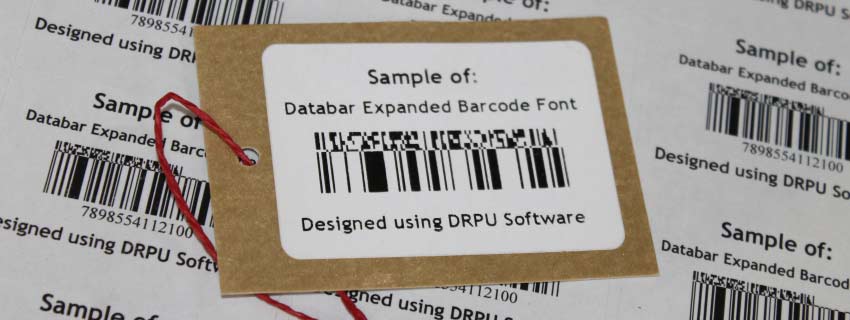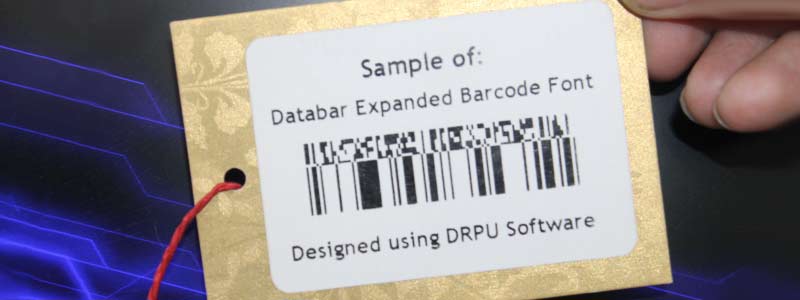Applications, Advantages, and Limitations of Databar Expanded Barcode
Author: Teachable Tech
| Published Date: 24/05/2023

Data bar Expanded barcode is a versatile and highly useful barcode type with a wide range of applications. Some of the common applications of Data bar Expanded barcode include:
-
Retail:
Data bar Expanded barcode is widely used in retail for inventory management and pricing. Retailers can use Data bar Expanded barcodes to encode the product information such as product name, size, colour, and price.
-
Manufacturing:
Data bar Expanded barcode is used in manufacturing for tracking and inventory management. The barcode can be used to encode the product information such as the product name, serial number, and manufacturing date.
-
Healthcare:
Data bar Expanded barcode is used in healthcare for patient identification, medication management, and blood bank labelling. The barcode can be used to encode the patient's name, medication information, and blood type.
-
Logistics and Supply Chain:
Data bar Expanded barcode is used in logistics and supply chain for tracking and inventory management. The barcode can be used to encode the shipment information such as the tracking number, destination, and origin.
-
Postal Services:
Data bar Expanded barcode is used in postal services for tracking and inventory management of mail and packages.
-
Government:
Data bar Expanded barcode is used in government for document tracking, identification, and inventory management.
-
Food Industry:
Data bar Expanded barcode is used in the food industry for tracking and inventory management of food products.
-
Libraries:
Data bar Expanded barcode is used in libraries for book tracking, inventory management, and circulation control.
-
Transportation:
Data bar Expanded barcode is used in transportation for tracking and inventory management of vehicles, spare parts, and equipment.
-
Ticketing and Entertainment:
Data bar Expanded barcode is used in ticketing and entertainment for event ticketing, access control, and crowd management.
Overall, Data bar Expanded barcode is a highly versatile and useful barcode type with a wide range of applications across various industries. The ability to encode large amounts of data and the flexibility to include multiple data types makes it a preferred choice for many applications.
Advantages Of Using Databar Expanded Barcode
Data bar Expanded barcodes offer several advantages over other barcode types, including:
✠Related Tags
Teachable Tech | 23-05-2023
Teachable Tech | 23-05-2023
-
Increased Data Capacity: Data bar Expanded barcodes can encode more data than other barcode types, making them ideal for industries such as healthcare, where large amounts of data are often required.
-
Improved Data Accuracy: The high-density barcode format of Data bar Expanded allows for more accurate scanning and decoding, minimizing errors that can result in lost or incorrect data.
-
Enhanced Security: The use of additional security features such as check digits and error correction codes in Data bar Expanded barcodes ensures that data is transmitted and received accurately and securely.
-
Better Inventory Management: The expanded data capacity of Data bar Expanded barcodes makes them useful for inventory management, as they can provide detailed information about a product or item, such as its location, expiration date, and batch number.
-
Improved Customer Experience: By using Data bar Expanded barcodes, retailers and other businesses can improve their customers' experience by providing more detailed and accurate information about products and services.
-
Easy to Read: Data bar Expanded barcodes can be read easily by most barcode scanners, making them a reliable and efficient method of data capture.
-
Easy to Implement: Data bar Expanded barcodes are easy to implement, requiring only a software application to generate the barcode image and a barcode scanner to read the code.
-
Compatible with Existing Systems: Data bar Expanded barcodes can be easily integrated into existing systems and workflows, making them a cost-effective solution for businesses looking to improve their data management processes.
-
Versatile: Data bar Expanded barcodes can be used in a variety of industries and applications, from inventory management and supply chain tracking to healthcare and retail.
-
Scalable: Data bar Expanded barcodes can be scaled to meet the needs of businesses of all sizes, from small businesses to large corporations.
conclusion:- Overall, Data bar Expanded barcodes offer a range of advantages that make them a popular choice for businesses looking to improve their data management processes, increase efficiency, and provide better customer experiences.
Limitations of Using Databar Expanded Barcode
Like all barcode types, Data bar Expanded has some limitations that can affect its usability and efficiency. Here are some of the main limitations of using Data bar Expanded:

-
Size Limitations: Data bar Expanded requires a larger space than other barcode types due to its higher information density. Therefore, it may not be suitable for small products or packaging.
-
Limited Readability: Some barcode scanners may have difficulty reading Data bar Expanded barcodes, especially if they are printed poorly or damaged.
-
Limited Support: Data bar Expanded is not widely used and is only supported by certain barcode scanners and software applications. This can limit its use in certain industries and applications.
-
Cost: Implementing Data bar Expanded requires specialized software and hardware, which can be expensive.
-
Limited Encoding Options: Data bar Expanded has fewer encoding options than other barcode types, which can limit its versatility in certain applications.
-
Limited International Use: Data bar Expanded is primarily used in North America and is not widely used internationally, which can limit its usefulness for companies with a global presence.
-
Limited Character Set: Data bar Expanded can only encode certain characters, which can limit its use for applications that require encoding of a wide range of characters.
-
Limited Error Correction: Data bar Expanded has limited error correction capabilities, which means that it may not be able to detect and correct errors in the encoded data.
Despite these limitations, Data bar Expanded can still be a useful barcode type for certain applications, especially in the retail industry where it is used to encode price information and coupons. However, it is important to carefully consider its limitations and suitability for a given application before implementing it.
Generate Databar Expanded Barcode
Generating a Data bar Expanded barcode involves several steps, and there are various software tools available that can assist in this process. Here's a general overview of how to generate a Databar Expanded barcode:
-
➜ Determine
the data you want to encode
Before generating a Data bar Expanded barcode, you need to determine the data you want to encode. This can include any alphanumeric data, such as product codes, serial numbers, or customer information. You will need to ensure that the data fits within the character limits of the barcode type.
-
➜ Choose a
Data bar Expanded barcode generator tool
There are several barcode generator tools available online that can generate Data bar Expanded barcodes. Some of these tools are available for free, while others require a fee. You can choose a tool based on your budget and the level of customization and control you require.
-
➜ Enter the
data into the generator tool
Once you have chosen a generator tool, enter the data you want to encode into the tool. Some generator tools may have options for adjusting the size, orientation, and other features of the barcode. You can choose these options based on your needs.
-
➜ Generate
the barcode
After entering the data and any optional settings, click the generate button to create the Databar Expanded barcode. The generator tool will use the data you entered to create a unique barcode image.
-
➜ Save or
print the barcode
Once the barcode has been generated, you can save the image file or print it. If you are printing the barcode, make sure to use a high-quality printer and paper to ensure that the barcode is clear and readable.
-
➜ Test the
barcode
Before using the barcode, it is important to test it using a barcode scanner or reader. This will ensure that the barcode is properly encoded and can be read by other devices. If the barcode is not readable, you may need to adjust the settings or regenerate the barcode.
-
➜ Use the
barcode
After testing the barcode, you can use it on your products, packaging, or other materials. The barcode will provide a unique identifier for the item that can be used for inventory management, sales tracking, and other purposes.
Summary:- Generating a Data bar Expanded barcode involves determining the data to encode, choosing a generator tool, entering the data, generating the barcode, saving or printing the barcode, testing it, and using it on your products or materials.